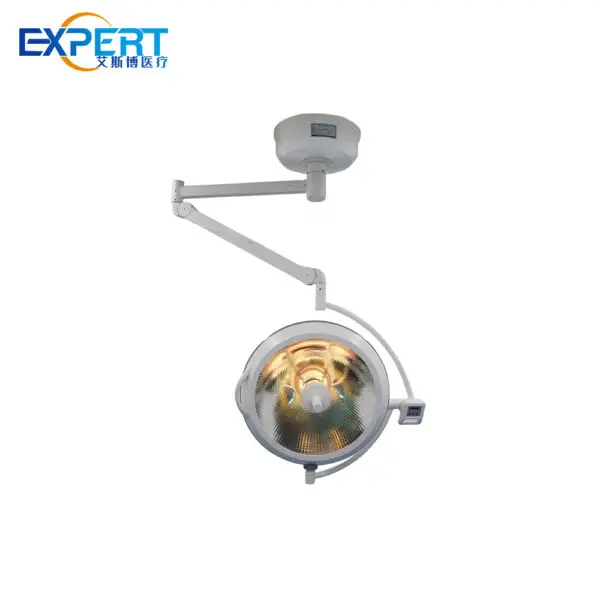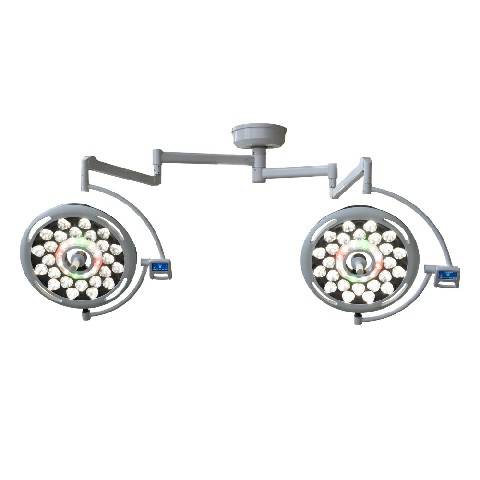Die Anschrift
304 Nordkardinal St.
Dorchester Center, MA 02124
Arbeitsstunden
Montag bis Freitag: 7:00 - 19:00
Wochenende: 10:00 - 17:00

Im schnelllebigen Umfeld des modernen Gesundheitswesens kann die Bedeutung medizinischer Operationsleuchten nicht hoch genug eingeschätzt werden. Diese speziellen Beleuchtungssysteme sind entscheidend für optimale Sicht bei chirurgischen Eingriffen, bei denen Präzision und Klarheit von größter Bedeutung sind. Im Laufe der Jahre hat der technologische Fortschritt die Operationsbeleuchtung von einfachen Glühbirnen zu hochentwickelten LED- und Hybridsystemen weiterentwickelt. Dies hat die Operationsdurchführung revolutioniert und die Behandlungsergebnisse verbessert.
The evolution of medical surgical lights spans decades, marked by significant technological advancements. Initially, surgical lights relied on halogen and incandescent bulbs, offering limited brightness and color rendering capabilities. However, with the advent of light-emitting diode (LED) technology, surgical lighting entered a new era. LEDs provide superior light quality with adjustable color temperatures, offering surgeons optimal visibility and reducing eye strain during prolonged procedures. Hybrid systems combine the benefits of both LED and halogen technologies, catering to specific surgical requirements.
Adequate illumination is critical in surgical settings for several reasons. Clear, shadow-free lighting enables surgeons to differentiate tissues accurately, facilitating precise incisions and reducing the risk of errors. Moreover, proper lighting enhances patient safety by minimizing the likelihood of complications arising from inadequate visibility. Modern surgical lights are designed to deliver uniform illumination across the surgical field, ensuring that every detail is visible, even in complex procedures.
Recent technological advancements have propelled surgical lighting systems to new heights of sophistication. LED surgical lights, for instance, offer adjustable intensity and color temperature settings, allowing surgeons to customize lighting conditions according to procedural requirements. Adaptive lighting systems automatically adjust to changes in the surgical field, maintaining optimal illumination without manual intervention. Ergonomic designs reduce glare and shadows, improving visibility and enhancing surgical precision while minimizing fatigue among surgical teams.
Medical surgical lights come in various configurations to suit different surgical environments and specialties. Ceiling-mounted lights are versatile, providing overhead illumination with adjustable positioning to accommodate varying surgical setups. Wall-mounted lights are ideal for smaller operating rooms or outpatient facilities, optimizing space while ensuring adequate lighting coverage. Portable lights offer flexibility, allowing surgeons to perform procedures in diverse settings, such as emergency rooms or ambulatory care centers.
Selecting the right surgical lighting system involves considering several factors. Light intensity plays a crucial role in ensuring sufficient brightness without causing discomfort to patients or surgical staff. Color temperature affects visual perception, with higher temperatures (e.g., 4000-6000K) providing a daylight-like quality that enhances tissue differentiation. Effective shadow management techniques, such as multiple light sources or reflectors, minimize shadows cast by surgical instruments, further improving visibility and procedural accuracy.
Real-world applications highlight the transformative impact of advanced surgical lighting systems on clinical outcomes. Studies have demonstrated reduced surgical complication rates and shorter recovery times associated with improved lighting conditions. For example, in neurosurgery, precise illumination is vital for navigating delicate brain structures, while in orthopedic procedures, clear visibility aids in accurate implant placement and alignment. Such examples underscore the critical role of surgical lighting in enhancing procedural success and patient safety.









Beyond clinical benefits, modern surgical lights offer economic advantages through enhanced energy efficiency and reduced operational costs. LED technology consumes less energy and has a longer lifespan compared to traditional halogen bulbs, resulting in lower electricity bills and reduced maintenance expenses over time. Furthermore, the environmental impact of LED lights is minimal, with fewer greenhouse gas emissions and reduced waste generation, aligning with healthcare facilities’ sustainability initiatives.
Proper training and maintenance are essential for maximizing the performance and longevity of surgical lighting systems. Healthcare staff should receive comprehensive training on operating procedures and maintenance protocols to ensure optimal functionality and safety. Routine inspections and timely replacements of bulbs and components help prevent downtime and maintain consistent lighting quality. By investing in ongoing training and maintenance, healthcare facilities can optimize surgical environments and uphold high standards of patient care.
Looking ahead, the future of surgical lighting technology promises further innovation and advancements. Emerging trends include the integration of digital imaging capabilities within lighting systems, enabling real-time visualization and enhanced surgical planning. Smart lighting solutions equipped with artificial intelligence (AI) algorithms may automate lighting adjustments based on surgical progress and patient physiology, optimizing outcomes and reducing procedural times. Continued research and development in adaptive lighting technologies and ergonomic designs will drive the evolution of surgical lighting, shaping the future of surgical practices worldwide.

| Besonderheit | LED-OP-Leuchten | Halogen-OP-Leuchten | Hybrid Surgical Lights |
|---|---|---|---|
| Lichtquelle | LED | Halogen | Combination of LED and Halogen |
| Energieeffizienz | Hoch | Niedrig | Mäßig |
| Farbtemperatur | Adjustable, typically 4000-6000K | Fixed, 3500-4500K | Adjustable, mixed range |
| Lebensdauer | Long (typically 30,000-60,000 hours) | Short (typically 1,000-2,000 hours) | Long (combination benefits) |
| Wärmeabgabe | Niedrig | Hoch | Mäßig |
| Umweltbelastung | Niedrig | Hoch | Mäßig |
| Anschaffungskosten | Hoch | Mäßig | Hoch |
| Wartungskosten | Niedrig | Mäßig | Mäßig |
| Besondere Merkmale | Dimming, shadow management, ergonomic design | Keiner | Dimming, adjustable light types |
Abschließend, medical surgical lights represent the ultimate in technological advancement for enhancing surgical precision and patient safety. As healthcare continues to evolve, these lights will remain indispensable tools in optimizing surgical environments and improving clinical outcomes. By understanding their pivotal role, healthcare providers can make informed decisions to integrate advanced lighting solutions into their practices, ensuring superior care delivery and patient satisfaction.
F: Was sind medical surgical lights verwendet für?
A:Medical surgical lights are used to provide optimal illumination during surgical procedures, ensuring clear visibility for surgeons to perform precise maneuvers.
Q:How do LED surgical lights differ from halogen lights?
A:LED lights offer higher energy efficiency, longer lifespan, and superior light quality compared to traditional halogen lights, contributing to enhanced surgical outcomes.
F: Welche Faktoren sollten bei der Auswahl berücksichtigt werden? OP-Leuchten?
A:Factors such as light intensity, color temperature, ergonomic design, and maintenance requirements should all be considered to select the most suitable lighting system for specific surgical needs.
Q:Why are LED surgical lights considered environmentally friendly?
A:LED lights consume less energy, produce minimal heat output, and have a longer operational lifespan, reducing overall environmental impact and operational costs for healthcare facilities.
Q:What are the future trends in OP-Beleuchtung Technologie?
A:Future trends include advancements in adaptive lighting systems, integration with digital surgical platforms, and innovations in AI-driven smart lighting solutions, promising further enhancements in surgical efficiency and patient care.
